Liposuction in Mexico City
Search and Compare the Best Clinics and Doctors at the Lowest Prices for Liposuction in Mexico City

Find the best clinics for Liposuction in Mexico City
With Medijump you can browse 3 facilities offering Liposuction procedures in Mexico City. The cheapest price available is $1,053 in Monterrey
Liposuction in Mexico
Price: $ 1,053
Liposuction in Monterrey
Price: $ 1,053
Liposuction in Guadalajara
Price: $ 1,148
Ukraine offers the best prices Worldwide
Price: $ 120
Cirplast Plastic Surgery, located in Alvaro Obregon, Mexico City, Mexico offers patients Liposuction procedures among its total of 29 available procedures, across 1 different specialties. The cost of a Liposuction procedure starts from ฿78,900, whilst the national average price is approximately ฿88,068. All procedures and treatments are undertaken by just a small team of specialists, with 2 in total at the Clinic, and they are not accredited by any recognized accreditations institutes
From 10 verified reviews
Valeria Rodríguez, 15 February 2020
Good experience, very good medical care, clean facilities, in waiting room cubrebocas they give you what I think is excellent to prevent disease within the hospital
PERFECTSTHETICS Polanco, located in Alvaro Obregon, Mexico City, Mexico offers patients Liposuction procedures among its total of 20 available procedures, across 3 different specialties. Currently, there's no pricing information for Liposuction procedures at PERFECTSTHETICS Polanco, as all prices are available on request only, whilst the national average price is approximately $2,447. All procedures and treatments are undertaken by the lead specialist at the Hospital, and they have multiple recognized accreditations, including: AMCPER - Asociación Mexicana de Cirugía Plástica, Estética y ReconstructivaCMCPER - Consejo Mexicano de Cirugía Plástica, Estética y Reconstructiva
Compare Before & After Photos of _procedure_photos.phpLiposuction
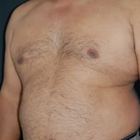
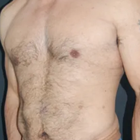
Front view
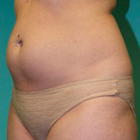
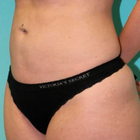
Half-side view
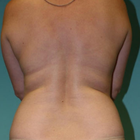
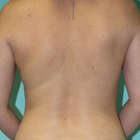
Full-side view
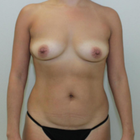

Front view
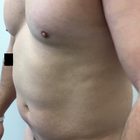
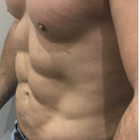
Half-side view
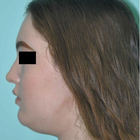
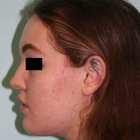
Full-side view
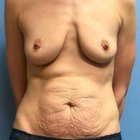

Front view
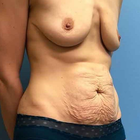

Half-side view
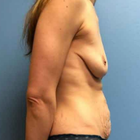

Full-side view
WHY US?
At Medijump, we're making medical easy. You can search, compare, discuss, and book your medical all in one place. We open the door to the best medical providers worldwide, saving you time and energy along the way, and it's all for FREE, no hidden fees, and no price markups guaranteed. So what are you waiting for?

Free

Best Price

Widest Selection

Risk-Free
What you need to know about Liposuction in Mexico City?

Liposuction is a cosmetic surgery that “sucks” out fat from areas that are hard to lose through a healthy diet and exercise, while liposculpture is the shaping of the skin back to its desired shape. Both are done in conjunction with one another at the same time. Most areas can be treated. Traditionally the most popular areas to treat are the stomach/abdomen, chin and neck, love handles, arms, and inner and outer thighs. Becoming more popular are the knees, calves and ankles, all with very successful results.
While liposuction can permanently remove fat cells and alter your body shape, it should not be viewed as a quick fix for individuals who are significantly overweight. The procedure works best for those who have already lost some weight themselves and are close to their ideal weight but need help tackling stubborn areas of fat in problem areas.
What is the cost of Liposuction in Mexico City?
When you're thinking about liposuction in Mexico City, one of the first things you probably wonder about is the cost. Here's the thing: the price isn't the same for everyone. It hinges on a few details like how many parts of your body you’re getting treated, how complex the treatment is, and the professional fee of your doctor. Costs for anaesthesia and the use of the surgical facility are also added to the bill. It's vital to remember, too, that because liposuction is often carried out for aesthetic reasons, normal health insurance might not cover it.
Can Liposuction be used as a weight-loss method?
Unwanted fats are very hard to get rid of especially if you are not a fan of exercise or diet. Liposuction, also known as Lipoplasty, liposculpture suction, lipectomy or simply lipo, basically eliminates unwanted fats by suctioning it away. Despite the growing trend of non-invasive fat reduction treatments, liposuction is still the leading procedure to remove stubborn fat cells.
Liposuction permanently removes fat cells and enhances the shape of your body. A plastic or dermatologic surgeon usually performs this type of procedure on the patient’s belly, hips, thighs, buttocks, arms, back or face to improve their shape. Furthermore, liposuction can be done together with other plastic surgeries such as facelifts, breast reductions, and tummy tucks.
This treatment procedure is particularly used for aesthetics, mainly to improve a person’s appearance. In most cases, maintaining and achieving such positive results will depend on your lifestyle.
What does a Liposuction Procedure Involve?
Before you have the treatment, a series of tests are required to ensure if you are fit for the surgery. You will also need to sign a consent form to confirm that you are fully aware of the risks, benefits and possible alternatives to the procedure.
You will likely be put under using general anesthesia, which can last for 1 to 4 hours. An epidural can also be used for procedures on the lower part of the body, although this is becoming increasingly unpopular now. Alternatively, you may be given local anesthesia if the procedure will be on small areas of your body. You may be asked to stand up during the procedure to ensure proper fat removal, but you will not feel any pain.
Tiny incisions will be made in the areas of interest through which a cannula can fit. This thin tube-like device is connected to a vacuum, capable of suctioning the fat from within your body. There are a few common techniques used, including Laser-Assisted or SmartLipo, UAL (Ultrasound-Assisted Lipo) or the most popular technique, Tumescent Lipo - this involves the pre-injection of a saline solution to help separate the fat from the blood, so less blood is removed. You'll discuss the best option with your surgeon before confirming what type of Liposuction is best for you.
How Long Should I Stay in Mexico City for a Liposuction Procedure?
Generally, patients who have received general anesthesia will be required to spend the night in the hospital (in-patient). Patients, who have had local anesthesia, may be able to leave the hospital on the same day.
After the operation, you will have to wear support bandages (support corset, bandages or elasticated support) whilst healing. Expect some pain, swelling and bruising during the following days and weeks. Your surgeon will prescribe medication to help control your pain and antibiotics to reduce the risk of infection. Furthermore, your stitches may be removed during your follow-up appointment with your surgeon. You should expect to stay in Mexico City for about a week post-op to allow for the initial recovery and check-up appointments, which will include the removal of stitches.
What's the Recovery Time for Liposuction Procedures?
Numbness in the specific area of your body where the fat was removed is to be expected for the first couple of weeks, usually, this will improve after 6 to 8 weeks. You may also need to wait a few days before going back to work. As for your normal activities, especially exercise, you may have to wait a few weeks before resuming.
Overall, the recovery time may vary from patient to patient. In most cases, patients can return to light activities within 2 to 3 days and are also able to go back to work after two weeks. As for the results, you may see visible results after 3 to 4 weeks, however, it can take several months before you see the final outcome.
What sort of Aftercare is Required for Liposuction Procedures in Mexico City?
Just like any other cosmetic surgery, following your surgeon’s aftercare instructions is vital in achieving and maintaining the best results. If the procedure was done above your waistline, you may be advised to sleep propped on pillows to have elevation on the specific area. This helps drain the fluids and prevent them from pooling. Furthermore, applying cold compress on a certain area where the procedure was performed is highly recommended, this will reduce inflammation and bruising especially during the first few days.
What's the Success Rate of Liposuction Procedures in Mexico City?
Liposuction remains one of the most popular cosmetic surgeries with a success rate of 85%, offering patients the enhanced body shape they've been craving. However, just like any other surgeries, it also comes with possible risks. Complications vary and are dependent on the procedure is as well as your surgeon’s skills. Possible risks and complications include:
- Severe bruising
- Inflammation
- Blood clot forms in veins, causing inflammation and complications (Thrombophlebitis)
- Kidney or Heart problems - changes in the body's fluid levels during the procedure may cause kidney or heart problems.
- Pulmonary embolism - when fat gets into your blood vessels and travels to your lungs, eventually, blocking your lungs.
Are there Alternatives to Liposuction Procedures in Mexico City?
CoolSculpting – is a fat freezing liposuction alternative. This is more suited to people who are close to their target weight but still have unwanted pockets of fat. Coolsculpting is a fat-freezing procedure that crystalizes your fat cells until they break apart painlessly.
Ultrashape - a non-invasive procedure that doesn’t require the need for anesthesia. This treatment procedure will make use of a body sculpting device that vaporizes fat cells within the targeted area with waves of ultrasound energy. Fat cells are permanently flushed out of your body, giving you a more natural-looking fat loss.
How does Liposuction differ from CoolSculpting and Vaser liposuction in terms of technique?
Liposuction vs Vaser Liposuction
Like traditional liposuction, the purpose of Vaser liposuction is to change the contours and shape of the body by removing persistent fat deposits. The word Vaser is actually an acronym for Vibration Amplification of Sound Energy at Resonance. This specialized ultrasound technology breaks down the fatty tissues using ultrasonic frequency waves, which is why it's often referred to as Ultrasonic Liposuction or Ultrasound Liposuction.
Liposuction vs CoolSculpting
CoolSculpting is the new non-invasive, freezing method used to also change the body contours and shape, however, this method does not require the use of a cannula so there is no damage to the overlying skin. Instead, it involves the controlled application of cooling localized fat deposits, which are then expelled from the body through the kidneys.
How safe is Liposuction in Mexico City?
Liposuction, when performed in Mexico City by a qualified and experienced plastic surgeon, is generally considered safe. The procedure has evolved significantly since its introduction, with advancements in technology and techniques contributing to its safety profile. Most liposuction procedures are performed without major complications, and patient satisfaction rates are high. However, as with any surgery, there is always an inherent risk.
It's crucial to have a detailed discussion with your surgeon regarding the safety of the procedure. The surgeon should be open about potential risks and complications, and explain how they would handle them should they arise. Factors such as your overall health, medical history and the area or the amount of fat being removed can influence the risks associated with liposuction.
What Should You Expect Before and After a Liposuction?
After your surgery, expect some swelling and discolouration in the areas where the fat was removed. To assist in healing and lessen swelling, you'll be given a snug garment to don. It is advisable to arrange for someone to take you home after the surgery and be with you for the initial day after the procedure. Though some changes will be noticeable soon after the surgery, the best results will take shape once the swelling has fully dissipated, which usually takes around 3-6 months. Regular check-ins with your surgeon are vital to ensure your recovery is progressing as expected.
As the wise saying goes, "Your waistline is your lifeline." Liposuction does remove fat cells for good, but weight gain post-procedure can cause the leftover fat cells to grow, potentially in different areas of your body. Therefore, a balanced diet and regular exercise are crucial for maintaining your new silhouette.
How Can I Prepare for Liposuction in Mexico City?
Prepping for a liposuction surgery in Mexico City? You've got this! Here are some absolutely essential steps you should follow for a smooth and successful procedure:
- Consultation: First things first. Have an in-depth consultation with your plastic surgeon. They'll assess your health status and discuss your goals. Taking this information into account, they'll provide some key instructions for you leading up to the surgery day.
- Healthy Lifestyle: In preparation for the procedure, it's of utmost importance to maintain a healthy lifestyle. Get in regular exercise. Eat balanced meals. Hydrate frequently. If you smoke, now is the time to quit. And hold off on alcohol. Your body will be on the fast track to healing, thanks to these healthy habits.
- Follow Instructions: Your surgeon will give you a set of preoperative instructions. Avoiding certain medications or supplements might be on the list. Stick to these guidelines religiously.
- Support Person: And lastly, on surgery day, make sure to have a trusted friend or relative by your side. Once the procedure is completed, you'll need a safe ride back home.
Whilst the information presented here has been accurately sourced and verified by a medical professional for its accuracy, it is still advised to consult with your doctor before pursuing a medical treatment at one of the listed medical providers
No Time?
Tell us what you're looking for and we'll reachout to the top clinics all at once
Enquire Now

Similar Procedures in Mexico City
Prices Start From $31

Prices Start From $120

Prices Start From $120

Prices Start From $120

Prices Start From $120

Prices Start From $31

Prices Start From $120

Popular Procedures in Mexico City
Prices Start From $111

Prices Start From $931

Prices Start From $76

Prices Start From $236

Recommended Medical Centers in Mexico City for Liposuction

- Interpreter services
- Translation service
- Religious facilities
- Medical records transfer
- Medical travel insurance
- Health insurance coordination
- TV in the room
- Safe in the room
- Phone in the room
- Private rooms for patients available

- Interpreter services
- Translation service
- Religious facilities
- Medical records transfer
- Medical travel insurance
- Health insurance coordination
- TV in the room
- Safe in the room
- Phone in the room
- Private rooms for patients available

- Interpreter services
- Translation service
- Religious facilities
- Medical records transfer
- Medical travel insurance
- Health insurance coordination
- TV in the room
- Safe in the room
- Phone in the room
- Private rooms for patients available

- Interpreter services
- Translation service
- Religious facilities
- Medical records transfer
- Medical travel insurance
- Health insurance coordination
- TV in the room
- Safe in the room
- Phone in the room
- Private rooms for patients available

- Interpreter services
- Translation service
- Religious facilities
- Medical records transfer
- Medical travel insurance
- Health insurance coordination
- TV in the room
- Safe in the room
- Phone in the room
- Private rooms for patients available

- Interpreter services
- Translation service
- Religious facilities
- Medical records transfer
- Medical travel insurance
- Health insurance coordination
- TV in the room
- Safe in the room
- Phone in the room
- Private rooms for patients available

- Interpreter services
- Translation service
- Religious facilities
- Medical records transfer
- Medical travel insurance
- Health insurance coordination
- TV in the room
- Safe in the room
- Phone in the room
- Private rooms for patients available
Liposuction in and around Mexico City
About Mexico City
Mexico City is the capital of Mexico and is the largest and populated city with a population of around 9 million, whereas the greater metropolitan area has around 21.2 million.
Mexico City is not only the political, administrative, and financial center of Mexico but also a major center for medical tourism within the country. It is a popular destination for affordable and quality medical care for many US and Canadian citizens and recently has started to attract Europeans and some Asian medical.
The City offers health care facilities and procedures at international standards and at a fraction of the cost when compared to the US and other countries. According to the Ministry of Health in Mexico, the competitive cost of medical care in the country allows an average saving of about 50% to 70% in various treatments and surgical procedures, and with the added benefit of small waiting times.
Mexico City offers state-of-the-art medical care in Cosmetic and Plastic Surgery, Cardiology, Orthopaedic, fertility treatments, and dental procedures. It has many famous hospitals with well-trained and board-certified doctors, and advanced medical equipment. Medica Sur, Hospital Espagnol, and Hospital Angeles, Dentalia Mexico City, and Ortopedia DF are some renowned hospitals and clinics in Mexico City. They have private rooms with all modern facilities and offer high standards of nursing care and the hospital staff all speak good English, which makes communication very easy.
Popular Areas in Mexico City
The City is located in the valley of Mexico and is surrounded by Mountains and two stunning snow-covered volcanoes, Popocatepetl and Iztaccihuatl tower above it. Though the city is very large, most of the popular attractions are in the historic city center, ‘Centro Historico de la Ciudad’. This is a 5.8 square mile UNESCO World Heritage site that has more than 14,000 important structures from the 16th to 19th Century.
Some important landmarks to visit in Mexico City are –
- Zocalo – The Constitution Square is right at the heart of the city. It measures around 240 meters in each direction and is the largest square in the world. The three major tourist attractions, the National Palace, the Metropolitan Cathedral, and the Templo Mayor dominate this area.
- The National Palace –is the official seat of power of the President and is situated on the east side of the Zocalo, The combination of history, beautiful architecture, and the best Diego Rivera murals in Mexico City make it a must-visit destination.
- Mexico City Metropolitan Cathedral – Made out of basalt and grey sandstone, this structure rests on top of the old Aztec temple precinct. It is one of the oldest and largest churches in the western hemisphere. Its prominent features are the bell towers and the statues of Faith, Hope, and Charity on the Clock Tower.
- Templo Mayor – It comprises the remains of the Great Temple of Tenochtitlan (of the Aztec period). It includes the finely sculpted circular disc which is more than three meters in diameter and weighs eight-and-a-half tons.
- The National Museum of Anthropology – One of the famous museums in the world and is in Chapultepec Park. It is very prominent due to the large monolithic figure at its entrance. It has a vast and impressive collection of archaeological discoveries and information about the life of the contemporary Indian inhabitants of Mexico.
The Palace of Fine Arts, Chapultepec Park, National History Museum, and Paseo de la Reforma and the Angel of Independence are other important landmarks of the city.
Weather and Climate in Mexico City
Mexico City has a subtropical climate because of its location in the high plateaus. It experiences mild and pleasant weather throughout the year. Summers are warm and winters are mild. The annual average temperature is 64°F. The temperature does not vary much throughout the year but the warmest month is May and the coldest is January. The average maximum temperature in summer is 77°F and the average winter temperature is 45°F.
The average annual rainfall of Mexico City is high at 33.31 inches (846.0 mm). June to September is the rainy season, with July being the wettest month. During the summer, there can be a few spells of rain.
The City has dry periods from January to April and November to December. February is the driest month of the year.
Getting Around in Mexico City
You can reach Mexico City by flying into Mexico International Airport which is known as Benito Juarez International Airport. It is the busiest airport in Mexico and serves many airlines. The major Mexican airlines Aeromexico and Aeromexico Connect operate flights to many Latin American cities and domestic and international destinations from this airport. Many American Carriers also have direct flights to Mexico City. Domestic carriers like Interjet and Volaris also operate out of the airport, connecting Mexico City to other domestic cities. The other airport in the city, Licenciado Adolfo Lopez Mateos International Airport (TLC) services low-cost domestic airlines.
There are many bus operators that offer bus service from US cities to Mexico City. The City also offers a well-planned transportation system to get around in which is the metro system, the downtown rail, light rail, normal buses, BRT (bus rapid transport), minibusses, and trolleybuses. Public transportation is very cost-effective and efficient, but can also be very crowded.
If you don’t want to travel by public transport, then you can choose Uber and other private taxi services. They are a bit more expensive but are stress-free.
Tourist Visas in Mexico City
Foreign Nationals wanting to enter Mexico must get a visa in advance unless they belong to any of the 67 eligible visa-exempt countries like the United States, UK, Canada, and Australia, or one of the three Electronic Authorization System eligible countries. Mexico also offers visa exemption to the people of any nationality who have a valid visa from the US, UK, Canada. They can travel to Mexico with their valid passports and can stay for up to 180 days.
However, citizens of countries like India, Russia, China, Sri Lanka, and many other countries need to apply and get a visa in advance to travel to Mexico for tourism.
Additional Information
- The currency used in Mexico City is the national currency of Mexico, the Mexican Peso (MXN). You can exchange your national currency for Pesos at any of the banks, or at Foreign Exchange Bureaus. The currency value of one US dollar is 18.84 MXN. You can also use your debit, credit, and travel cards in the city.
- Mexico City has all the major national and international banks. In such a large city, there are no shortages of ATMs.
- Spanish is the language widely spoken in Mexico City. Nahuatl, Otomi, Mixtec, Zapotec, and Mazahuaare are other commonly spoken indigenous languages. Due to the large expat population, English is also popular in the city.
- The family community is an important aspect of Mexican life. The locals are very conscious of their responsibilities towards their family members.
- Catholic Christianity or Roman Catholicism is the major religion in Mexico City. 83% of the population follow this religion.
- You will find the City celebrating Mexican holidays, both historic and religious throughout the year. Some of the important holidays are the –
- Constitution Day – First Monday of February
- Benito Juarez Day – Third Monday in March
- Independence Day – September 16
- Revolution Day – Third Monday in November
- Navidad (Christmas) – December 25
Popular Searches
- Plastic Surgery in Thailand
- Dental Implants in Thailand
- Hair Transplant in Thailand
- Breast Augmentation Thailand
- Gastric Sleeve in Thailand
- Gender Reassignment Surgery in Thailand
- Laser Hair Removal in Bangkok
- Botox in Bangkok
- Dermatology in Bangkok
- Breast Augmentation in Bangkok
- Coolsculpting in Bangkok
- Veneers in Turkey
- Hair Transplant in Turkey
- Rhinoplasty in Turkey
- Stem Cell Therapy in Mexico
- Rhinoplasty in Mexico
- Liposuction in Mexico
- Coolsculpting in Tijuana
- Rhinoplasty in Korea
- Scar Removal in Korea
- Gastric Sleeve in Turkey
- Bone Marrow Transplant in India
- Invisalign in Malaysia
- Plastic Surgery in the Dominican Republic
- Tummy Tuck in the Dominican Republic
- Plastic and Cosmetic Surgery in Poland
- Rhinoplasty in Poland
- Hair Implant in Poland
- Dental Implants in Poland
- IVF in Turkey

